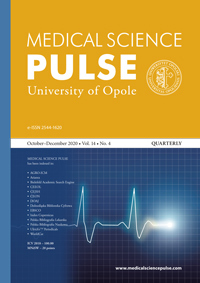Body structure and physical fitness assessed by the Senior Fitness Test: a cross-sectional study in a sample of Polish seniors.
Body structure and physical fitness assessed by the Senior Fitness Test: a cross-sectional study in a sample of Polish seniors.
Author(s): Agata Mroczek, Antonina Kaczorowska, Małgorzata KaczmarzykSubject(s): Health and medicine and law
Published by: Uniwersytet Opolski
Keywords: aging; body structure; physical fitness; seniors; Senior Fitness Test
Summary/Abstract: Background: The Senior Fitness Test (SFT) measures the underlying physical parameters associated with functional ability, and identifies whether an older adult may be at risk of loss of functional fitness. Assessing the functional fitness performance of older adults is an essential element in the design of effective exercise programs. Aim of the study: The present study aimed to assess selected parameters of the body structure and functional fitness of the elderly using the SFT. Material and methods: 60 people (30 women and 30 men) were examined. The participants were divided into two age groups: the younger group (people up to 74 years old) and the older group (people over 75 years old). Height, weight, waist circumference, and hip circumference were measured. Body mass index (BMI) and waist to hip ratio (WHR) were calculated. The prevalence of overweight and obesity was estimated. The SFT was used to assess physical fitness. Results: The younger men were taller, heavier, and had greater hip circumference than older men (respectively p=0.03, p=0.02, p=0.03). Younger men also showed statistically significant better results in the arm curl and 2 min step tests (p<0.05). Younger women were taller (p<0.05) and obtained better results in almost all fitness trials than older women. Between younger vs. older women statistically significant results were found in the following tests: arm curl, 30 s chair stand, chair sit and reach, 8 ft up-and-go, and 2 min step (p<0.05). Overweight and obesity were more common among younger groups of both sexes. Conclusions: Age influences mobility and physical fitness, especially among women. Younger people are characterized by higher body structure parameters and achieve better results in the physical fitness test.
Journal: Medical Science Pulse
- Issue Year: 14/2020
- Issue No: 4
- Page Range: 67-74
- Page Count: 8
- Language: English

